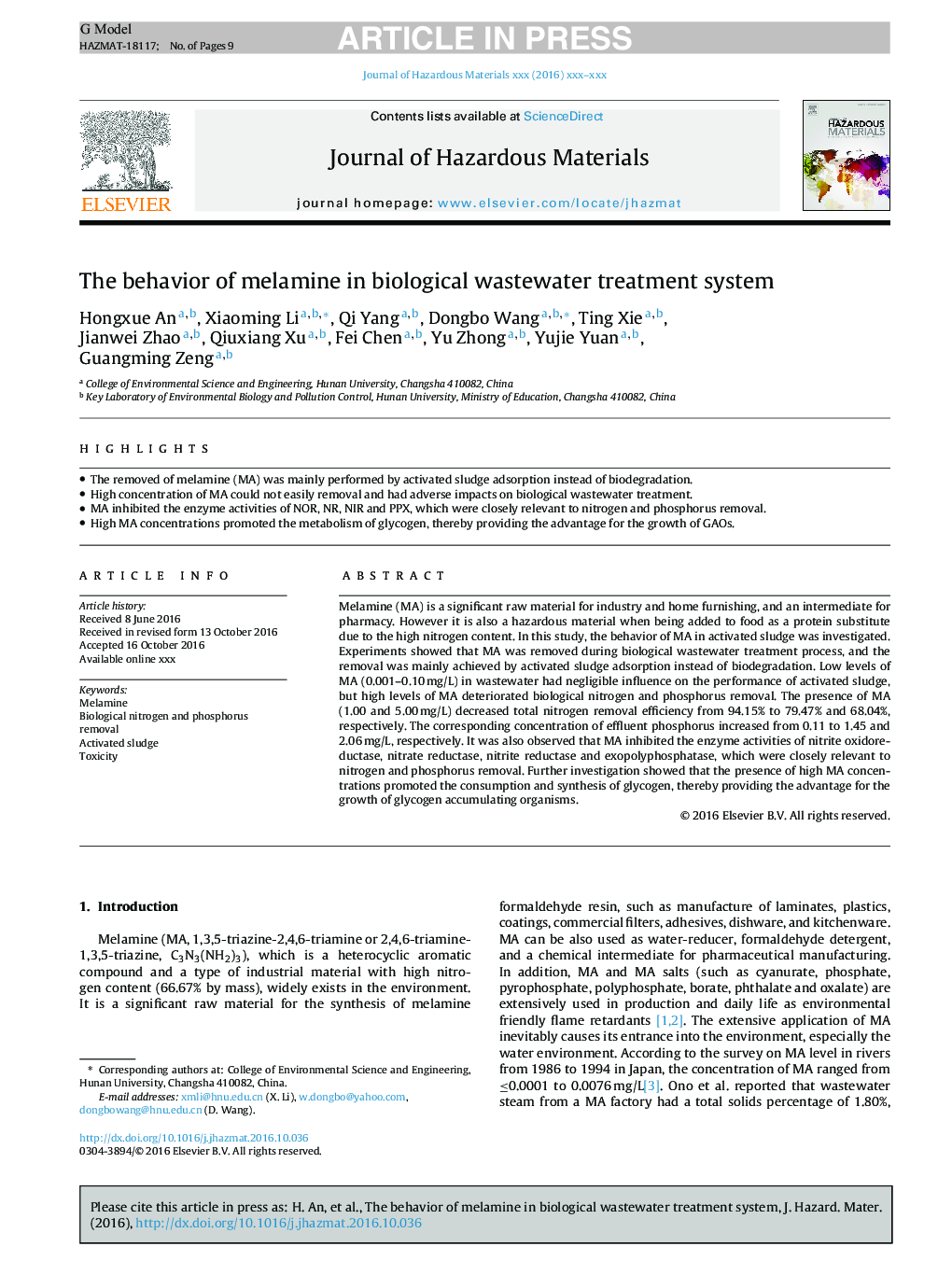| Article ID | Journal | Published Year | Pages | File Type |
|---|---|---|---|---|
| 4980007 | Journal of Hazardous Materials | 2017 | 9 Pages |
Abstract
Melamine (MA) is a significant raw material for industry and home furnishing, and an intermediate for pharmacy. However it is also a hazardous material when being added to food as a protein substitute due to the high nitrogen content. In this study, the behavior of MA in activated sludge was investigated. Experiments showed that MA was removed during biological wastewater treatment process, and the removal was mainly achieved by activated sludge adsorption instead of biodegradation. Low levels of MA (0.001-0.10Â mg/L) in wastewater had negligible influence on the performance of activated sludge, but high levels of MA deteriorated biological nitrogen and phosphorus removal. The presence of MA (1.00 and 5.00Â mg/L) decreased total nitrogen removal efficiency from 94.15% to 79.47% and 68.04%, respectively. The corresponding concentration of effluent phosphorus increased from 0.11 to 1.45 and 2.06Â mg/L, respectively. It was also observed that MA inhibited the enzyme activities of nitrite oxidoreductase, nitrate reductase, nitrite reductase and exopolyphosphatase, which were closely relevant to nitrogen and phosphorus removal. Further investigation showed that the presence of high MA concentrations promoted the consumption and synthesis of glycogen, thereby providing the advantage for the growth of glycogen accumulating organisms.
Keywords
Related Topics
Physical Sciences and Engineering
Chemical Engineering
Chemical Health and Safety
Authors
Hongxue An, Xiaoming Li, Qi Yang, Dongbo Wang, Ting Xie, Jianwei Zhao, Qiuxiang Xu, Fei Chen, Yu Zhong, Yujie Yuan, Guangming Zeng,
